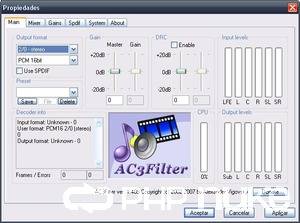

DOLBY TM AC3 CODEC LICENSE
Patent licensing ĭolby AC-4 is covered by patents and requires a license from Dolby Laboratories.

ĭolby AC-4 is extensible and audio substreams allow for new features to be added to Dolby AC-4 while maintaining compatibility with older decoders. However, for 22.2 channel audio, the required bit rate may be as high as 1536 kbit/s. When tested for ATSC 3.0 the bit rates needed for the required audio score was 96 kbit/s for stereo audio, 192 kbit/s for 5.1 channel audio, and 288 kbit/s for 7.1.4 channel audio. When Dolby AC-4 was tested by the DVB the MUSHRA score was 90 at 192 kbit/s for 5.1 channel audio. Dolby states that Dolby AC-4 provides a 50% reduction in bit rate over Dolby Digital Plus. ĪC-4 uses an improved modified discrete cosine transform (MDCT) audio coding algorithm. The use of different decoders allows Dolby AC-4 to support lower cost devices while also allowing for more advanced decoders for AV receivers. Dolby AC-4 supports up to 7 audio objects with a core decoder and can optionally support additional audio objects with a more advanced decoder. A-JCC doesn't support side signals and is limited to 5.1 channel audio while A-CPL does support side signals. Dolby AC-4 has two different channel based encoding tools with Advanced Joint Channel Coding (A-JCC) used for low bit rates and Advanced Coupling (A-CPL) used for high bit rates. Side signals may also contain audio objects.

Additional audio channels may be encoded as side signals which Dolby AC-4 decoders can optionally support which would allow for the delivery of 7.1.4 channel audio. Technical details ĭolby AC-4 can have up to 5.1 core audio channels which all Dolby AC-4 decoders are required to decode. On April 14, 2016, Dolby Laboratories announced that Samsung would ship TVs with support for Dolby AC-4 in 2017. On July 14, 2015, Dolby Laboratories announced that Sony Visual Products and Vizio would support Dolby AC-4. On March 10, 2015, the Advanced Television Systems Committee (ATSC) announced that Dolby AC-4 was one of the three standards proposed for the audio system of ATSC 3.0.
DOLBY TM AC3 CODEC TV
Its development started in late 2011 to create a high-quality audio format that had a certain resemblance to Dolby TrueHD destined for multiple uses, to be used in streaming services, future TV broadcasts, and mainly to replace the traditional Dolby AC-3, and in December 2014 Dolby Laboratories approved the sound format for commercial use. Dolby AC-4 has been adopted by the DVB project and standardized by the ETSI. Dolby AC-4 bitstreams can contain audio channels and/or audio objects. Dolby AC-4 is an audio compression technology developed by Dolby Laboratories.


 0 kommentar(er)
0 kommentar(er)
